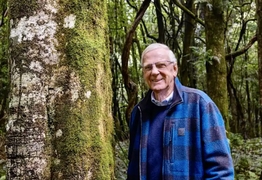Council responds to community concerns over housing strategy vision
Lynne Strong
25 April 2025, 3:00 AM
 Karen Fowler is asking “Is this housing strategy right for Kiama?”
Karen Fowler is asking “Is this housing strategy right for Kiama?”When Karen Fowler asked “Is this housing strategy right for Kiama?” In her recent opinion piece for The Bugle, she gave voice to what many in the community have been wondering.
Is the Draft Local Housing Strategy guiding us toward a future we recognise, or one we might regret?
She raised concerns about whether the Strategy matches our actual growth needs, reflects the community’s values and ensures that infrastructure keeps pace.
At a recent Kiama Business Network forum, Ed Paterson, Kiama Council’s Director of Planning, responded to those concerns.
Outdated population figures?
Karen noted the Strategy uses 2022 population projections that predicted 6917 new residents by 2041.
But 2024 data slashes that figure to just 2180.
Ed acknowledged the discrepancy and said the newer figures will be reviewed as part of the Strategy’s refinement.
“Projections change all the time,” he said, citing migration and policy shifts. “We’ll be checking our work against the latest data.”
Too much housing?
Karen also questioned why Council was planning so many homes if population growth is expected to slow.
Ed explained that the Strategy is a long-term vision, stretching 40 to 50 years ahead, not a short-term construction program.
Rezoning and infrastructure take time, he said, and planning ahead prevents reactive decision-making down the track.
Why expand urban boundaries?
Even using the older population forecasts, Karen argued the Strategy proposes more homes than needed and questioned the need for four Urban Expansion Areas (UEAs).
Ed’s response was Council doesn’t control when landowners or developers act, so identifying greenfield sites early allows for coordinated, sustainable growth rather than speculative, piecemeal proposals.
What about infrastructure?
Karen welcomed the Strategy’s “non-negotiable principles” and its focus on infrastructure planning.
Council says these parts have been significantly strengthened. Sydney Water is now doing network modelling, and a new Structure Plan is being prepared to ensure coordinated delivery of roads, open space, schools, and utilities.
Preserving what matters most
Karen called on the community to think about what we value most, our green hills, beaches, and village character, and to ask if the Strategy protects those things.
Ed said this feedback has been heard. The revised vision includes environmental protections, respect for First Nations culture, and aims for “housing in the right locations”.
Will it deliver affordable housing?
While Karen didn’t use the phrase “affordable housing,” she raised real concerns about inclusivity.
Ed clarified that Council is exploring planning controls, incentives, and partnerships with community housing providers. But he also pointed out that some aspects of affordability, like regulated housing schemes, are beyond local government’s control.
Have your say
Council has received more than 100 submissions.
Community feedback is open until 27 April, and the final Strategy is expected to go to Council mid-year.
As Karen wrote, “This is more than a plan. It is a vision of our future. Let’s make sure it’s one we share.”




